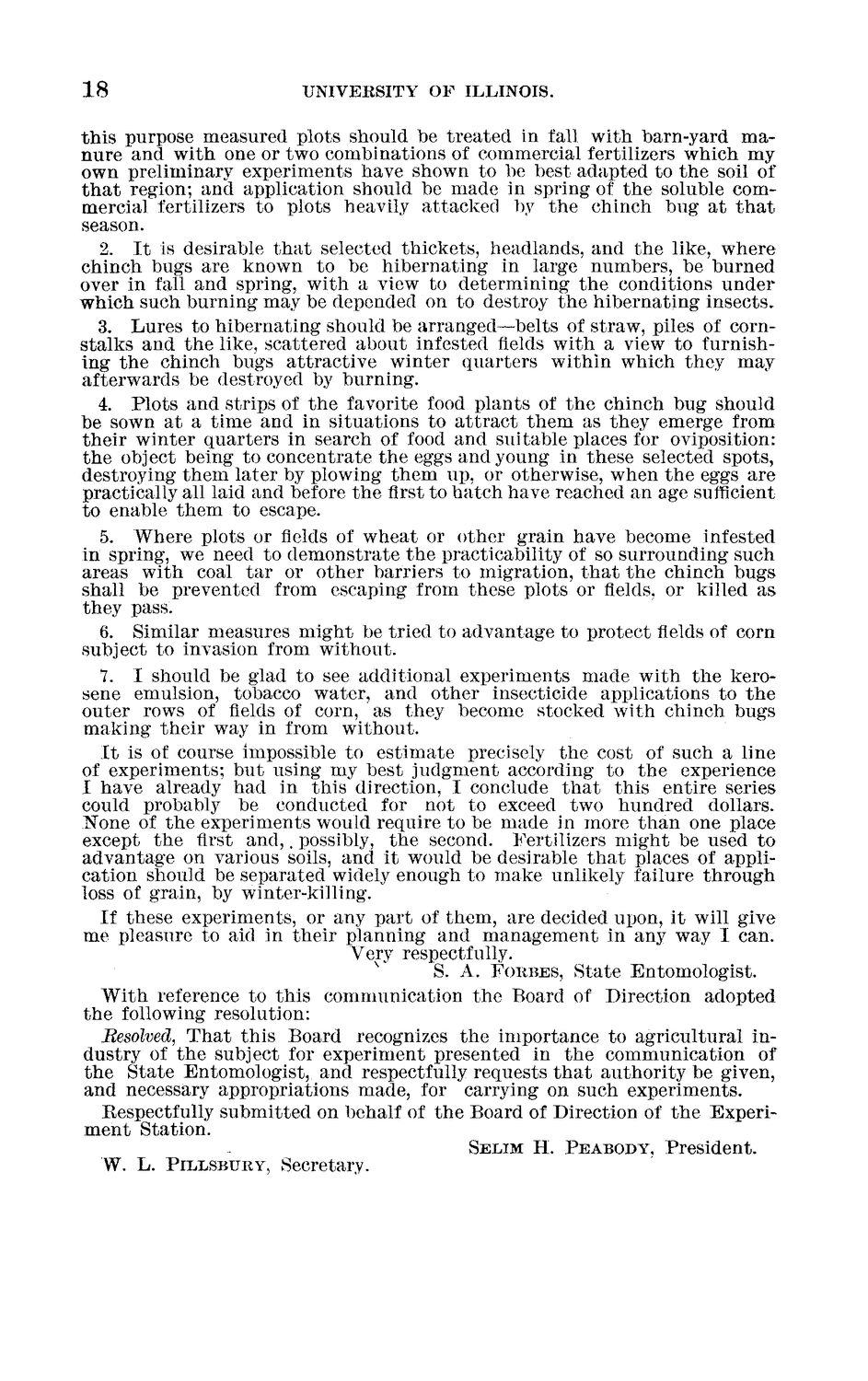| |
| |
Caption: Board of Trustees Minutes - 1890
This is a reduced-resolution page image for fast online browsing.

EXTRACTED TEXT FROM PAGE:
18 UNIVERSITY O F ILLINOIS. this purpose measured plots should be treated in fall with barn-yard manure and with one or two combinations of commercial fertilizers which my own preliminary experiments have shown to be best adapted to the soil of t h a t region; and application should be made in spring of t h e soluble commercial fertilizers to plots heavily attacked by t h e chinch bug a t t h a t season. 2. I t is desirable t h a t selected thickets, headlands, and the like, where chinch bugs are known to be hibernating in large numbers, be burned over in fall and spring, with a view to determining t h e conditions under which such burning may be depended on to destroy the hibernating insects. 3. Lures to hibernating should be arranged—belts of straw, piles of cornstalks and the like, scattered about infested fields with a view to furnishing t h e chinch bugs attractive winter quarters within which they may afterwards be destroyed by burning. 4. Plots and strips of t h e favorite food plants of t h e chinch bug should be sown at a time and in situations to attract them as they emerge from their winter quarters in search of food and suitable places for oviposition: the object being to concentrate the eggs and young in these selected spots, destroying them later by plowing them up, or otherwise, when the eggs are practically all laid and before the first to hatch have reached an age sufficient to enable them to escape. 5. Where plots or fields of wheat or other grain have become infested in spring, we need to demonstrate the practicability of so surrounding such areas with coal t a r or other barriers to migration, t h a t the chinch bugs shall be prevented from escaping from these plots or fields, or killed as they pass. 6. Similar measures might be tried to advantage to protect fields of corn subject to invasion from without. 7. I should be glad to see additional experiments made with t h e kerosene emulsion, tobacco water, and other insecticide applications to t h e outer rows of fields of corn, as they become stocked with chinch bugs making their way in from without. I t is of course impossible to estimate precisely the cost of such a line of experiments; but using my best judgment according to t h e experience I have already had in this direction, I conclude t h a t this entire series could probably be conducted for not to exceed two hundred dollars. None of the experiments would require to be made in more than one place except the first and,. possibly, t h e second. Fertilizers might be used to advantage on various soils, and it would be desirable t h a t places of application should be separated widely enough to make unlikely failure through loss of grain, by winter-killing. v If these experiments, or any part of them, are decided upon, it will give me pleasure to aid in their planning and management in any way I can. Very respectfully. v S. A. FORBES, State Entomologist. With reference to this communication t h e Board of Direction adopted the following resolution: Besolved, That this Board recognizes the importance to agricultural industry of t h e subject for experiment presented in t h e communication of the State Entomologist, and respectfully requests t h a t authority be given, and necessary appropriations made, for carrying on such experiments. Respectfully submitted on behalf of the Board of Direction of t h e Experiment Station. SELIM H. PEABODY, President. W. L. PILLSBURY, Secretary.
| |